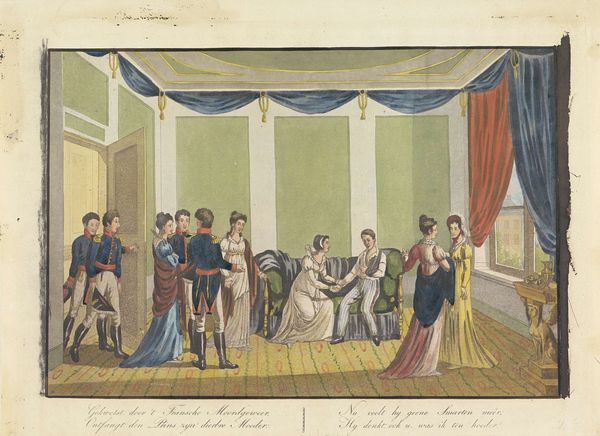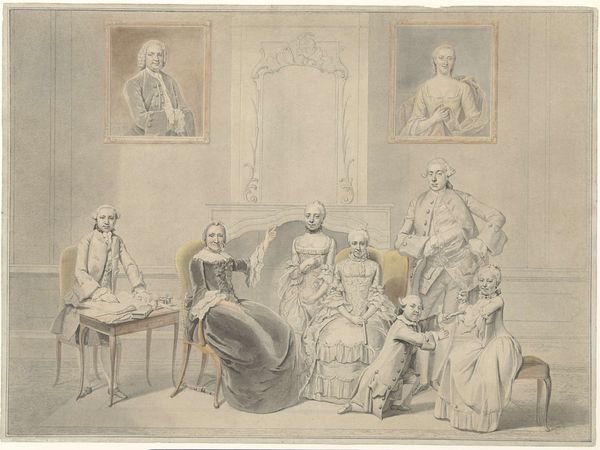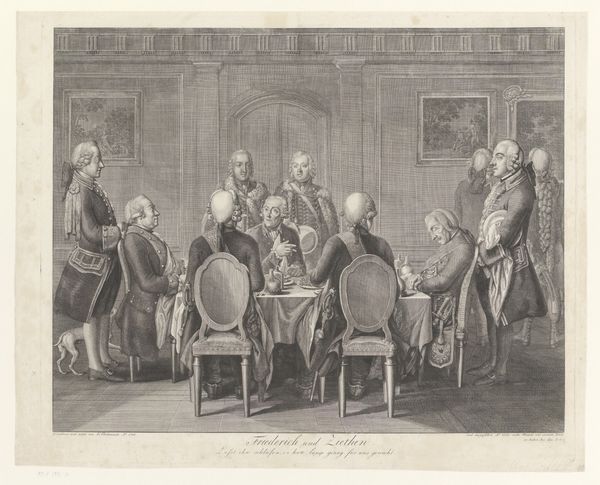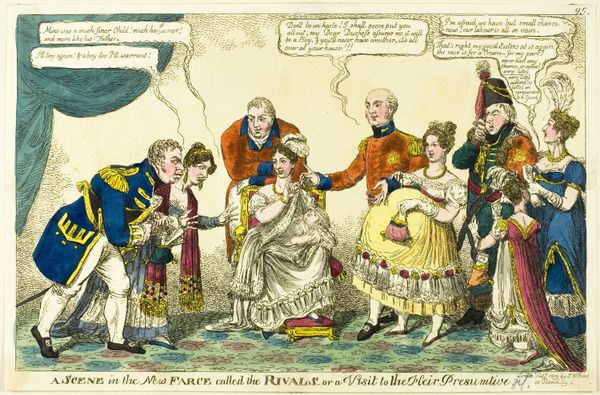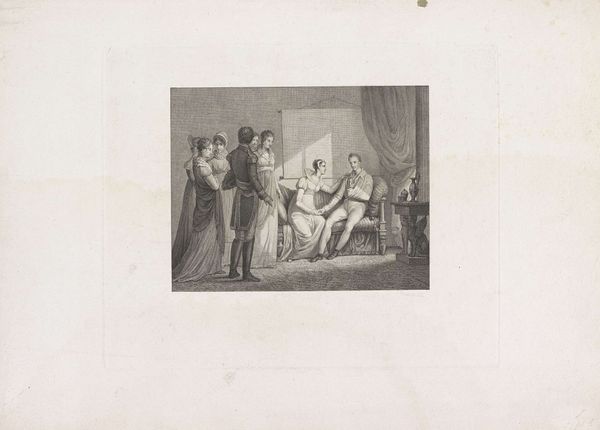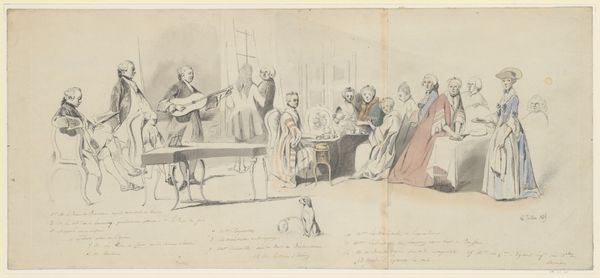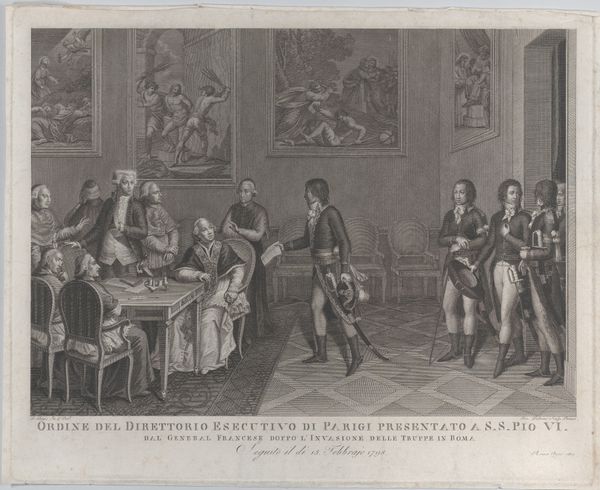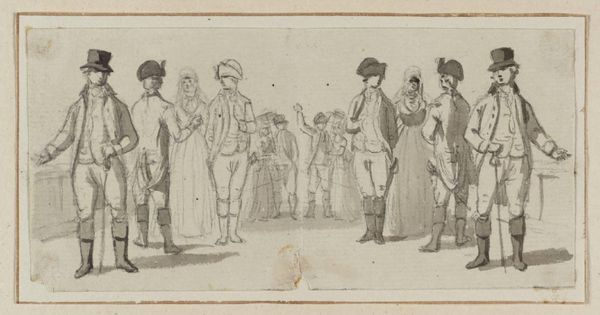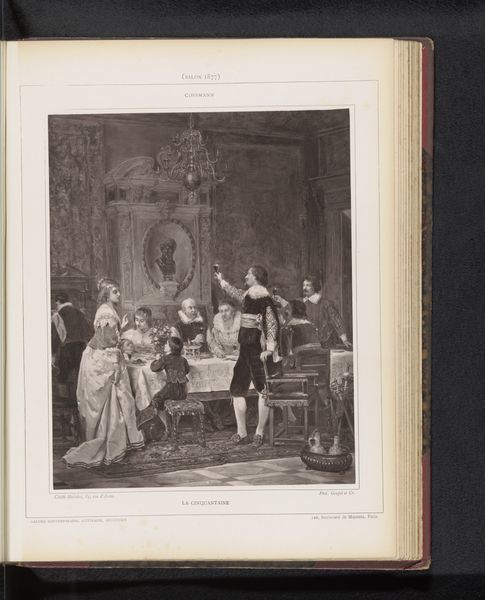
#
aged paper
#
toned paper
#
handmade artwork painting
#
personal sketchbook
#
coloured pencil
#
coffee painting
#
watercolour bleed
#
watercolour illustration
#
pencil art
#
watercolor
Dimensions: height 195 mm, width 310 mm
Copyright: Rijks Museum: Open Domain
Curator: This delicate watercolor illustration, "Europees kaartgezelschap op Ceylon," is attributed to Jan Brandes, dating back to approximately 1785. It’s likely a page from a personal sketchbook. Editor: My first thought? Claustrophobia! Despite the delicate colors, there's a certain tension—so many figures crammed into that space. Like a colonial pressure cooker. Curator: The artist captures a European card playing gathering during a period of Dutch colonial presence in Ceylon, now Sri Lanka. Note the architecture – a blend of European and local styles—and the racial hierarchy subtly presented. Editor: Subtlety? Maybe! But look at the rigid poses. It's not just the clothes that scream "outsider," it’s in every forced smile and guarded glance. And the colors! The washed-out tones feel like they are bleaching the life from the scene itself. It is melancholic, don't you think? Curator: That melancholy could reflect Brandes’ own experience in Ceylon. The Dutch East India Company, while enriching some, inflicted social and economic change on the local population and environment, so what we're likely seeing is the banality of colonial administration against the fraught reality of its effects. The presence of the local population also indicates how entrenched colonialism was in the everyday. Editor: It’s also, to me, about the isolating experience of privilege. There is an unease emanating, a feeling of those colonizers barricading themselves against a cultural environment they’re either unwilling or unable to embrace. That game they are playing represents how they deal with the whole island, isn't it? A high-stakes, self-serving diversion? Curator: The artist indeed, provides a glimpse into a complex web of power dynamics and social interactions shaped by colonialism in 18th century Ceylon. I appreciate how the composition invites us to analyze those interactions as historical constructs. Editor: It’s a fascinating paradox, a painting of muted colors and stifled emotions, yet bursting with historical narratives of domination and dispossession. Thank you for pointing that out to me! I may go ruminate a little more about that, with an even stronger cup of coffee, haha.
Comments
No comments
Be the first to comment and join the conversation on the ultimate creative platform.
